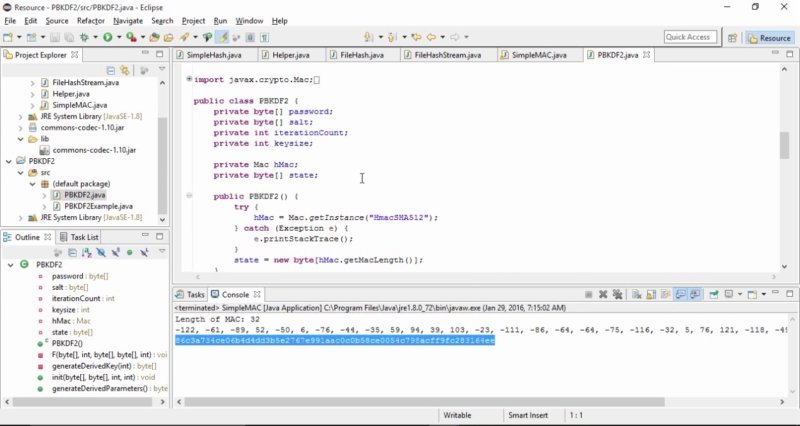| Java Cryptography Basics On Skillshare |
| Written by Nikos Vaggalis | |||
| Thursday, 25 February 2016 | |||
|
Password encryption is currently a hot topic so a new course covering crypto hashing algorithms in Java seems a worthwhile way to gain some knowledge of the topic. It normally costs $10 per month to join Skillshare, an online learning community which offers over 3,000 courses on a wide range of subjects. Skillshare is currently running an offer of $0.99 for 3 months, which was an attractive incentive to try it out. Java Cryptography Architecture: Hashing and Secure Password Hashing is a new video based course by Frank Hissen of IT Security Development & Consulting. It goes through the very basics of Java's crypto hashing algorithms such as MD5, HMAC and PBKDF2 in a little over half an hour. The Setup The first video goes through the prerequisites needed for trying out the coding examples yourself. These are JDK 1.8 as it contains all of the latest encryption providers, any Eclipse IDE version and the Apache Commons Codecs Library, which is used in most examples since it exposes an API that is much easier to work with than the inherent JDK one. Simple Hashing Example Real-world Hashing Example Efficient stream-based Hashing
Message Authentication Code (MAC) Secure Password Hashing with PBKDF2-PKCS#5 A nice side effect of using the prepared package is that you get to take a look at PBKDF2's actual implementation,which despite its severity, spans only 90 lines of code, newlines included! The last part explores a few wrapper libraries over the Java crypto services, that offer a much easier to consume interface. All in all,Java Cryptography Architecture was a quick,spanning just 36 minutes, and easy to follow course,skimming through the basics of Java based hashing facilities, ideal as a starting point to tackling cryptography on the Java platform. Frank Hissen offers another encryption course File Encryption Basics and Practices with CrococryptFile on the Skillshare platform. As a Skillshare member you not only have the opportunity to learn but also to create courses and earn royalties by sharing them with a worldwide audience. It claims an audience of 1.1 million students and to have paid more than $5 million to its teachers.
More InformationSkillshare Java Cryptography Architecture: Hashing and Secure Password Hashing Related ArticlesTo be informed about new articles on I Programmer, sign up for our weekly newsletter,subscribe to the RSS feed and follow us on, Twitter, Facebook, Google+ or Linkedin.
Comments
or email your comment to: comments@i-programmer.info |
|||
| Last Updated ( Thursday, 25 February 2016 ) |



